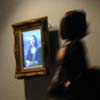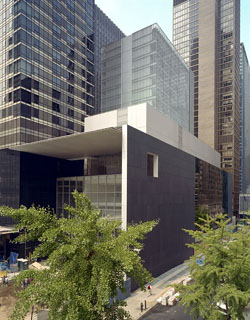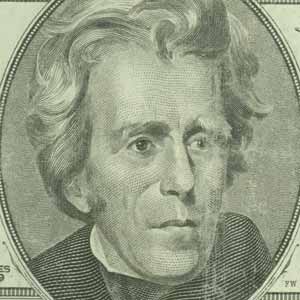Six months after its opening in May of this year, there isn't much that hasn't already been asked or said about the Interventionists exhibition at Mass MoCA.
I've asked the MASS MoCA Security staff - the people who spend the most time with the exhibition and the visiting public - what are the most frequently asked questions about the show? Then I have asked these very same questions to Nato Thompson, the exhibition's curator.
The following are short descriptions of 10 works taken from the exhibition catalogue, FAQs about each piece, and Nato Thompson's answers - provided here as audio files.
Also see the Mass MoCa website.
I1. Introduction Part One - AUDIO FILE
I2. Introduction Part Two - AUDIO FILE
---
1. The Snail Shell System, N55 (Nomads) - AUDIO FILE
Q: The 'wheel', where did it come from and how did it get here?
The Snail Shell System is a low-cost mobile home. A swishy European answer to Wodiczko's Homeless Vehicle. Shaped like a wheel, the Snail Shell System is covered with rubber caterpillar tracks to facilitate movement through city streets. The system is designed for one person and works on both land and water (on water it can be rowed). The home comes equipped with air intake valves, an equipment box containing a kitchen pan, kettle, alcohol burner and plastic bags, a bilge pump and a toilet.
N55 suggest that Snail Shell System could be used to transport items or to provide protection from violence during demonstrations.
---
2. Craig Baldwin's Billboard Outlaws (Nomads) - AUDIO FILE
Q: Where and when were these made?
Craig Baldwin has amassed a collection of slides documenting billboards whose originally intended message - usually an advertisement - have been altered or subverted. The slides will be projected in the gallery. Baldwin changed some of the billboards himself, but most of the interventions were undertaken by others, including the so-called California Department of Corrections, Billboard Liberation Front, Mary Fortuna, Dana Hoover, Joel Katz, and Nina Peters. Many were done anonymously, working the thin lines between graffiti, art, vandalism and civil disobedience.
---
3. Garden of Earthly Delights / El jardin de las delicias, Rubén Ortiz-Torres (Nomads) - AUDIO FILE
Q: Did kids make this?
For Ortiz-Torres, who lives in southern California, yard work is emblematic of the everyday labor of Latin American immigrants in California. Plying their trade as grounds-keepers, Latino gardeners are perhaps the most visible part of the informal economy that connects culture and class in southern California. In Garden of Earthly Delights, Ortiz-Torres has reworked a piece of vernacular machinery, the lawn mower, infusing it with Chicano low-rider aesthetics: hydraulics, flashy paint, and shining chrome in a wry recasting of tools and stylized fashion.
---
4. Black Factory, William Pope.L (Nomads) - AUDIO FILE
Q: Is this work meant to inspire hate?
The Black Factory is a large panel truck that travels to museums and other public places and serves as a stage and prop for a collaborative public event. According to Pope.L, the Black Factory 'brings the contradictions of difference where they are needed most. A visit from the Black Factory provides more than thought-provoking entertainment and exploration; it presents opportunity.' The Black Factory truck, designed in collaboration with Spurse, is equipped with a pulverizing center and gift shop. It will be parked outside MASS MoCA after it completes a tour throughout Eew England. From its rear, a giant inflatable igloo will expand to the museum's second floor, through a window, and into the gallery. Inside the igloo, visitors will see items of 'blackness' that were collected during the tour.
During the Black Factory tour, which included stops at the Tang Teaching Museum and Bard College, its visitors had the option to take part in "Check Days", a term that Pope.L says refers to both the idea of checking in with someone and ''the day of celebration in working-class culture when the check arrives." Check Day" participants are encouraged to bring to the Black Factory site between three and ten objects that speak to them of blackness. Visitors participate in one or two ways: their items can either be photographed and published in an archive on the World Wide Web or donated outright. Some of the donated objects will continue to tour with the Black Factory, while others are ground up and pulverized to be molded into new products offered for sale in the Factory's gift shop (including rubber ducks, among other interesting items.)The Black Factory is 'aimed at anyone interested in issues of what makes us different,' explains Pope.L. 'Calling it the 'Black Factory is just a way of making it concrete. It's not specifically for black people, it's using the black experience as a funnel to talk about difference.
---
5. God Bless Graffiti Coalition, On the 8th Day, (Reclaim the Streets) - AUDIO FILE
Q: What happened to all the newspapers?
God Bless Graffiti Coalition, Inc. has curated and assembled a collection of over 200 wheatpaste posters from artists around the globe. These posters, which generally adorn the streets of major cities, present one of the most common and compelling forms of interventionists practices.
While many might view graffiti as vandalism, or petty crime, the Coalition argues that graffiti, like advertising, is simply a message delivery in public space. Unlike ads, however, which use public space to encourage consumption, graffiti is simply a form of personal expression.
---
6. Sans Terre: Mexico City/North Adams, Spurse (The Experimental University) - AUDIO FILE
Q: If we wanted to be a part of this how could we do it? How could we contact them?
In Sans Terre (by Spurse and others) Spurse starts with the unconventional proposition that Mexico City is North Adams and North Adams is Mexico CIty. This strange statement makes evident Spurse's belief that urbanism functions - to use their phrase - 'vectorally' and ignores static and dated conceptions of space such as nation states, regional boundaries, and distinct biological systems. This methodological definition of urbanism allows a rethinking of the natural as a form of the urban rather than vice versa. In order to test their vivid hypothesis. Spurse applies the same methodologies to North Adams that they have previously used to study Mexico City. In addition to this they have allowed other artists and urbanists to intervene/collaborate in this investigation.
What makes their research particularly unusual is their refusal to use any form of hierarchy in sorting data that would reinforce nature/culture distinctions and subject/object metaphysics. Spurse collects their data (interviews, found materials, and photographs) by following an algorithmically generated path which is the same path that members walked in Mexico City. They follow the route exactly: through backyards, into mountains, across streets, and into businesses. As they walk, they ask whomever they encounter questions such as , 'describe your houseplants 'or 'what was happening the last time you looked at the ground?' If they see trash, they pick it up, and at times they take photographs. This assortment of quasi-randomly procured material is then displayed in a floating Plexiglas archive alongside the materials from Mexico City and many other locations.
---
7. New Negrotopia, Tana Hargest (The Experimental University) - AUDIO FILE
Q: Does she have a website where you can buy her stuff?
In this project Bitter Nigger Inc. has proposed 'a theme park beyond race' titled New Negrotopia. Bitter Nigger Inc. presents New Negrotopia at trade shows seeming to troll for investors. Comprised of a promotional video, a website and actual trade show booths, New Negrotopia is presented as a virtual island resort and amusement park in which visitors can travel through their own racial history. New Negbrotopia consists of several interactive environments, including: Atlantic Adventure, a 3D interactive experience of the Middel Passage; the Cotton Bales on the Mississippi water ride; and the The Instititute of Thinking, a mock-academic think-tank located in paradise.
---
8. Free Range Grain, Critical Art Ensemble (The Experimental University) - AUDIO FILE
Q: How is he doing now?
'In executing projects such as this one, we hope to contribute to an idea of public science by focusing on issues (such as food production) that are of direct interest to people, and so contribute to making the meaning of scientific initiatives immediate and concrete, as opposed to the vague abstractions they tend to be. Free Range Grain was initially installed and performed at the schirn kunsthalle in Frankfurt in reaction to the rising idea of the European Union as 'Fortress Europe'. Through the use of an on-site laboratory, CAE tested foods brought in by visitors for Genetically modified organisms (GMOs). The appearance of GMOs would call into question claims by EU bureaucrats that border-control policies were preventing the entry of these organisms (in the body of fruits, vegetables and grains) onto the continent. Free Range Grain has been adapted for North Adams, where the subject of research has shifted to the still vague term 'organic'. Their project poses the question: is 'naturalness' possible in the world today and what do we mean when we say 'natural' and 'organic'?
---
9. YOMANGO Bag, YOMANGO (Ready to Wear) - AUDIO FILE
Q: How can you have this piece in the show when you have a museum store downstairs?
Yomango has produced a shopping bag for shoplifting, offering it as a series of sewing patterns with which visitors can make their own versions. YOMANGO likes to think of this work as 'clothing for civil disobedience.'
'This magic bag makes objects disappear. It's ergonomically designed to be the ultimate shoplifting utensil. It is simple to make and is based on the same principle as the devices used by magicians and other tricksters. YOMANGO converts going to the mall into a magical experience.
---
10. Management Leisure Suit and Breakaway Business Suit, The Yes Men (Ready to Wear) - AUDIO FILE
Q: Are these guys for real?
The Management Leisure Suit and Breakaway Business Suit is a distinctive remnant from a memorable Yes Men lecture in Tampere, Finland. Mistakenly invited to speak on behalf of the World Trade Organization at a conference titled, 'Textile of the Future,' Bichlbaum (calling himself Hank Hardy Unruh) spoke on the dangers of equating freedom with the free market. Mr. Unruh made astounding claims such as one that the U.S. Civil War (in which slavery became illegal) was a useless exercise in freedom, since slave labor then led to remote sweatshop labor.
As his over-the-top, farcical finale, Bichlbaum (as Unruh) tore off his business suit, super-man-like, to reveal the 'Management Leisure Suit.' A golden leotard with an inflatable three-foot phallus, the suit came equipped with a video interface system that allowed surveillance of employees, and a device purported to deliver electric shocks to lax workers.
---
Conclusion: What's Next? - AUDIO TRACK
----
Special thanks to Ron Munoz and the security staff of MASS MoCA.
Links:
Mass MoCA
"The Interventionists" is on view through spring 2005 at Mass MoCA.
All images are courtesy of Mass MoCA.
Joanne Pasila is a regular contributor to Big, Red & Shiny.




